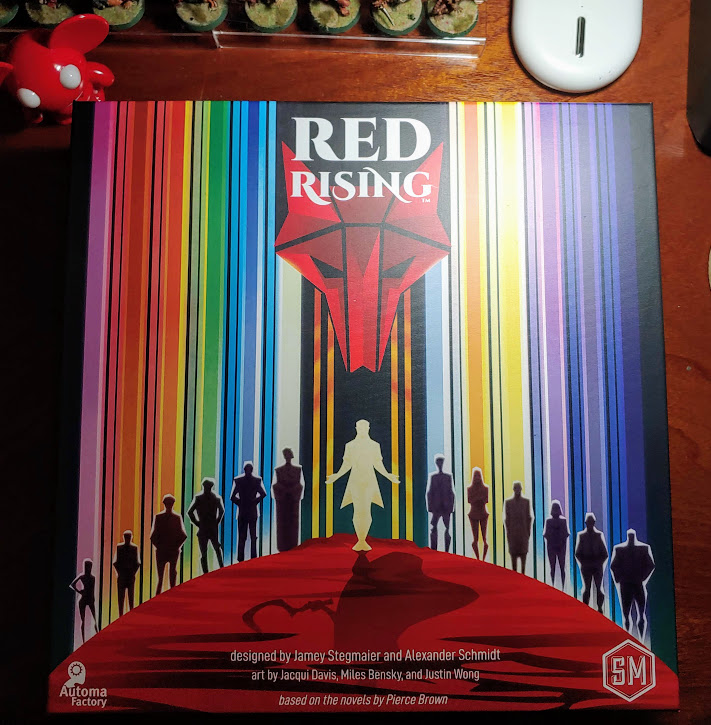Red Rising is probably my current favorite board game.
Well, goodnight everybody!
Oh, you’re still here? Ok, fine. Let’s talk about Red Rising, and why I think it may, or may not, be worth your time at your table.
Of Pedigrees, Thematics, and Review Envy
Red Rising is the latest game from Stonemaier Games, publishers of Scythe, Wingspan, and Tapestry, and is based on the Red Rising series by author Pierce Brown. For some people, that sentence is all you need to know for good or for ill, but I’m going to throw a wrench into this pedigree: I’ve only ever played one Stonemaier game (Wingspan, once), and I’ve never read the Red Rising novels. The fact that I love this game comes purely from interacting with the game itself, and my recommendation doesn’t really have anything to do with who made it or where it comes from.
With that said, let’s explain what Red Rising is about. Players will assume the role of the head of one of six houses, and vie to construct an entourage of followers that will allow their house to come to prominence by the end of the game. Mechanically, this is done by creating the highest scoring hand out of the cards available to you from either your 5 card hand, or from cards that appear on the board. In essence, Red Rising is a very simple game. Players do not draw additional cards or directly interact, and a player’s turn is limited to two basic actions: Deploy, in which you exchange a card from your hand with one from the board or deck, or Scout, where you reveal the top card of the deck and place it anywhere on the board. Of course, the cards themselves complicate these actions. Most cards have effects that bend the rules of what you can do when they are Deployed. Play continues in this manner until 3 criteria are met, either by 3 players meeting those criteria (7 Helium, 7 on the Fleet Track, or 7 influence in the Institute), or by 1 player meeting 2 of those criteria on their own.
Before getting into why I love Red Rising and why I think it may actually NOT be the game for you, I wanted to address the general reaction to this game by other reviewers. Red Rising is, if anything, a divisive game in response, as I’ve noticed reviewers either love or hate this game. Some of these reactions seem to come from Stonemaier’s pedigree, although I can’t personally speak to that. The other is that many reviewers compare Red Rising to another game, Fantasy Realms, on which Red Rising is based (Jamey Stegmaier admits as much in the rulebook, and this derivative nature is no secret). I can’t really comment on that comparison, however, as I’ve never played Fantasy Realms, and the game seems out of print, or at least hard to come by, so whether or not Fantasy Realms is better than Red Rising might solely be a matter of taste.
[Editor’s Note: Fantasy Realms is a favorite of my group’s. An expansion and reprint are due soon.]
A lot of this introduction is to say that I have no experience with Stonemaier Games general library (of which I feel there’s no real importance to this game), I know nothing about the theme on which it is built (so I have no attachment to the characters, world, or attraction factor), and I don’t know anything about the game that supposedly inspired this licensed derivative (So the mechanics are fairly unique and new to me). In fact, I struggled to review this mostly because I felt like perhaps I did not have any comparable experience to other reviewers, but then it dawned on me: I’ve not stopped wanting to play, or playing, Red Rising since I bought my copy, and it sits on my desk directly next to me, tempting me to keep opening it and playing it more. So, who cares who made it, what the book its based on is about, or whether some out of print game I can’t buy is better? I sure don’t, and maybe you shouldn’t either.
Color Story
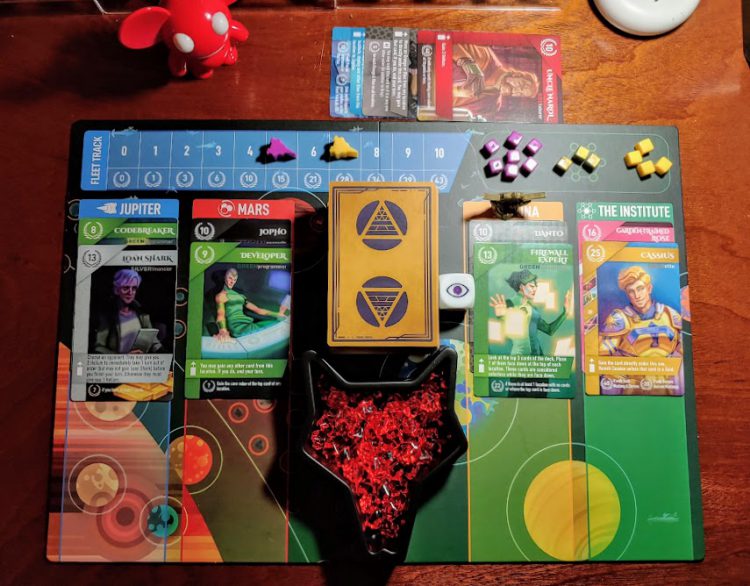
The first game of Red Rising that I won was tense. It was a 2 player game between my partner and I, and the hand I was initially dealt was fairly bad. The cards didn’t quite gel at all naturally, no abilities in my hand seemed adequate to garnering me a larger hand size, and any fragile synchronicity I had constructed was in danger from devastating Discard a Card actions. Additionally, Deploying a card from my hand to get an advantage led to tense moments where I worried I could not get that card back in a later turn.
Things all changed when Mustang entered my life. This Golden Goddess (literally, at least, color suit wise) promised me 5 points per color in my hand, and my hand was a multi-colored mess. But then a larger story started to unfold: my Conversationalist would give me an additional 15 points for having a White card, and the Martyr in my hand would do exactly that but little else, unless I could snag the Sovereign token at game’s end, which would allow me to select ANY card from the Mars location… Which just so happened to contain Stained, an Obsidian card that would give me 30 points for his base score and being the only Obsidian card in my hand. My Silver Stock Broker and Green Hacker rounded out things, but the wrench in my victory path was the Yellow Group Therapist, who would bestow a whopping 35 points if I could just ensure no cards were Banished at the end of the game. My Partner, on the other hand, adopted a strategy of drafting Gold, Gray, and Obsidian cards into her hand, working off of their synergies to banish unwanted cards and get high scoring bonuses at the end of the game.
Although there is no direct player interaction aside from certain card effects, our game was far more push and pull than it seemed, and the entire victory came down to one thing: who had the Sovereign Token at the end of the game. Our final score was a 40 point difference; we realized after scoring that whoever owned the token would have won. But we had no way of knowing this, nor did we know what each other’s strategy was, making the reveal of such a close game that much more entertaining.

In the end, Mustang, the rogue Gold card who enjoys the company of other castes, roundly beat out a collection of society’s elites with a last ditch play from a (literal) martyr. The narrative was perfect, sweet, and gave the game that much more of a fun thematic end than simple calculation of points. We spent the rest of our gaming night playing lighter card games, but kept coming back to talking about what had just happened in Red Rising, and almost regretting that we had scheduled other games to play rather than going one more time into the Red Rising universe for that evening.
Muddied Colors
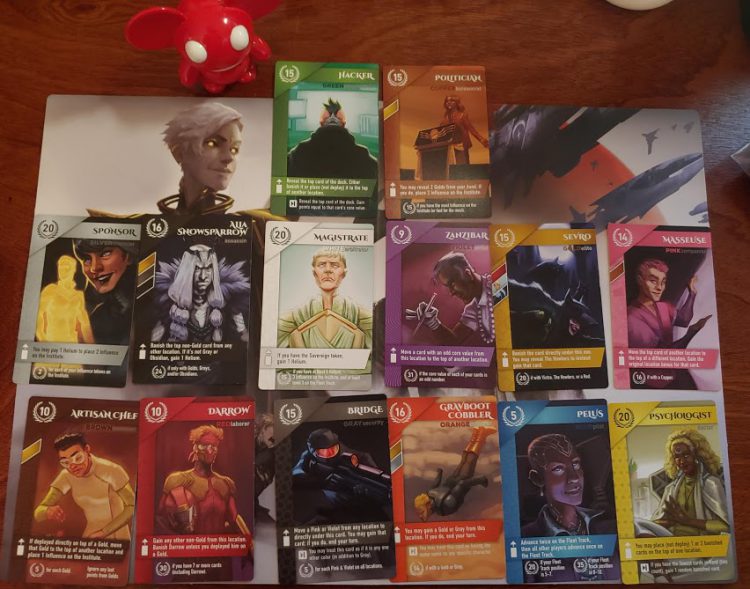
However, Red Rising occasionally creaks. When we played at 4, the game was noticeably less cohesive, and I struggle to think of what this game looks like when played at a full 6. If your tablemates are prone to analysis paralysis, Red Rising does little to assist, as literally every one of the more than 100 included in the box does something totally unique and different. Some cards directly affect what cards you pick up when Deployed; others allow you to Banish cards from the game, pick up resources, change around the placement of cards in the game, and a select few cards directly let you interfere with other players, such as removing resources, the Sovereign token, or by far the least fun ability, a card from their hand.
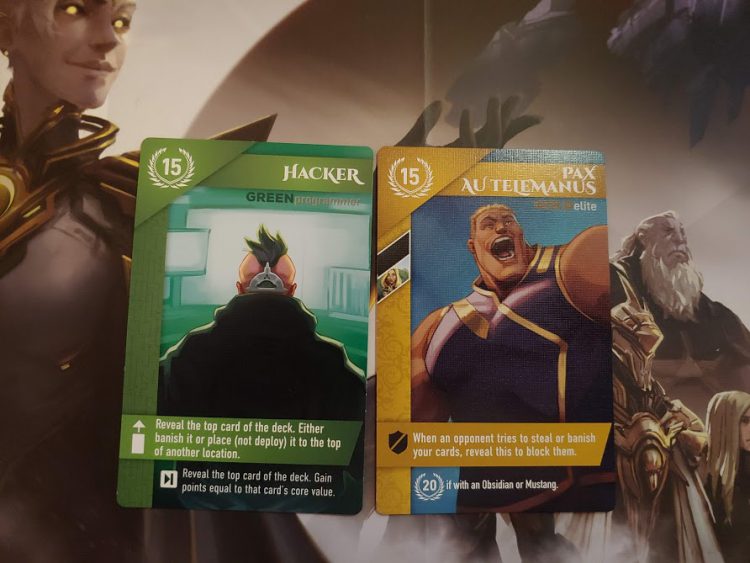
Teaching Red Rising is simple while also being complicated. The game itself is, again, simple: place a card, do what it says, pick up a card, or reveal a card and place it. But since each card does something unique, teaching these interactions can be difficult (and totally random). In our game of 4, we saw literally no Yellow or Green cards for the entire game; in my two player game with my partner, we never saw a Blue or Red card. In solo games against the Automa, I found this to be consistently an interesting fluctuation in the game’s huge deck: sometimes, you just don’t see certain colors, let alone certain cards. Further, knowing the universe of Red Rising may not really help much in teaching or experiencing the game, except perhaps in knowing the names of “big” characters, as many of these cards will name other people specifically for scoring bonuses or negative modifiers.
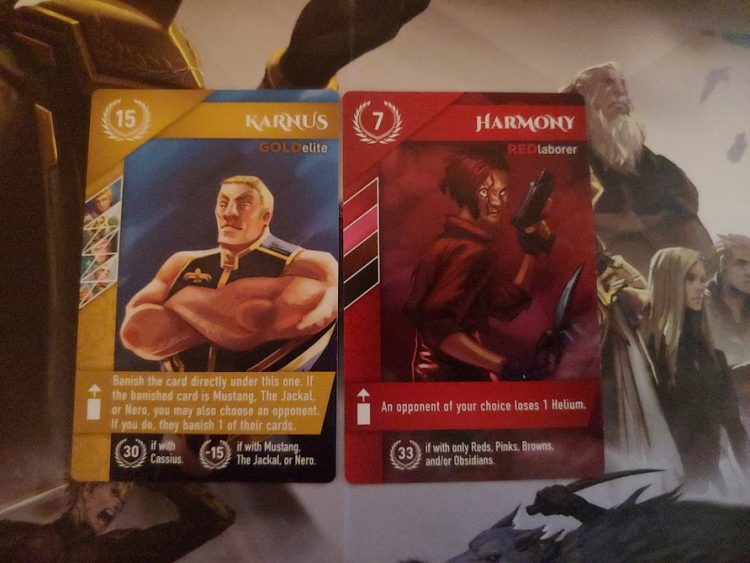
What I can say is that while the initial game of Red Rising can drag, our future games have not, with each play getting increasingly faster as the mechanics and cards become more familiar. The 45-60 minute time on the box is fair for your first few games, but we found that we could get that time to even 30 minutes once everyone was more familiar with how things worked. In my own experience, I think Red Rising works best at smaller player counts, and I’d hesitate to ever go above 4 players with the game. Personally, I found it best at 2, where it felt tight and competitive while also engaging and fun. As a general note, the “remove a card from a player’s hand” cards are very much anti-fun, as regaining lost cards can be difficult due to the randomness of what cards are available, but this effect has only ever really crept up in my larger group games as an actual problem. The deck is so large that, frankly, it would be easy to simply remove cards from the game and take away the “take that” effect these cards can sometimes have, so that is an option (Or just don’t play with jerks.).
Rose-Colored Glasses
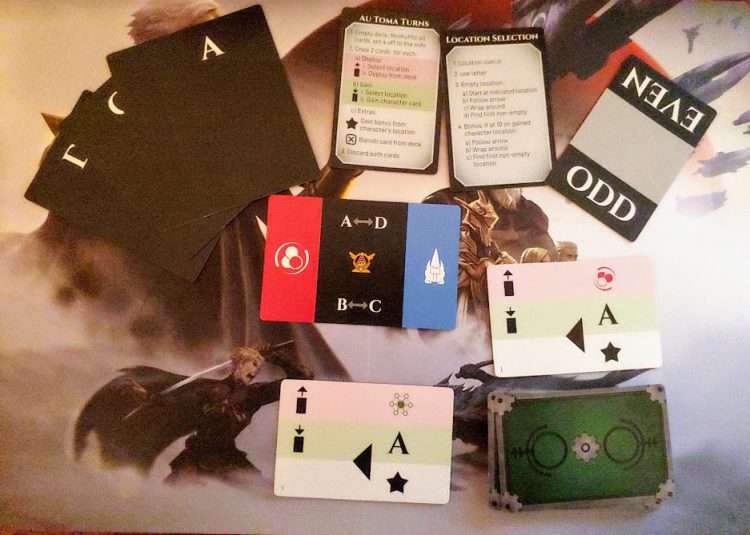
Red Rising is, in a lot of ways, a B Movie, or a 7.0 video game, or that album you love that no one else vibes with. There isn’t a lot of room for these types of games, and board game discussion tends to heavily favor “perfect” or “garbage” ratings on games. This is understandable in some cases, board games require expensive investments of time, logistics, and money, but it also means that many games that you might love more than anything else may get buried under a constant deluge of Triple-A, blockbuster Kickstarter releases.
So do I think Red Rising deserves to be in your collection? Well, that probably depends on your reaction to the review so far, but quite simply: I don’t think this is a game for everyone. Red Rising is a fairly relaxing game about amassing points, somewhat passively, until the game comes to a close. It sometimes lumbers; since you do not have to draw cards, creating what you think is the “perfect” hand for this game will result in a lot of your turns becoming a rinse repeat of Scout a card, pick up a resource, push the meter closer to 7, repeat until the end game triggers. Of course, some games become a mad dash at the end as those cards you were so passively Scouting start to look a bit more… attractive. Maybe you DON’T want to end the game suddenly, but, “Uh oh. Did you just ruin your hand? Do you have enough time to FIX your hand?” become fairly common questions in the end game.
For players who want high interaction (whether that be take-that style play or player blocking action), Red Rising probably isn’t for you. The game is also fairly simple, meaning that there aren’t many mechanics to master or skillful plays to be made, meaning that fans of heavier games will also likely not find Red Rising appealing. There is a fair bit of argument about whether Red Rising is a “filler” game, however I found that it does best with repeated plays with the same group, meaning that it might be a hard game to introduce as something your group plays once and then doesn’t again. I think you might love it too, if you give it a chance. But if you’re looking for a game that is great at 1-4, rewards familiarity, and plays in less than an hour, Red Rising fits. The somewhat simplistic style of the game makes it a fairly good introductory game, and the gorgeous card art and aesthetics of the game make it stand out on the table despite its fairly small footprint.
As a final note, there are technically 2 versions of this game. Stonemaier’s website directly sells a “Collector’s Edition” which comes with “deluxified” components: metal influence cubes and tokens, gold-foiled Gold cards, card holding trays, and a bespoke insert. The retail edition, which I have, uses plastic components and doesn’t have a plastic insert, but instead baggies and a paper divider. There is no gameplay difference between them, so if Red Rising speaks to you, your choice mostly comes down to how ‘deluxe’ you want your game to look; personally, the only thing I would want is the insert, if only because it would make the game set up even faster than it already does.
I actually have a hard time pinpointing WHO Red Rising is for, but what I can tell you is that I love it. Will I love it forever? That I don’t know. But I do know that there are few games I’ve bought or owned that occupy as much of my idle thoughts of getting to the table again as Red Rising; in fact, I’m going to go set it up right now.
